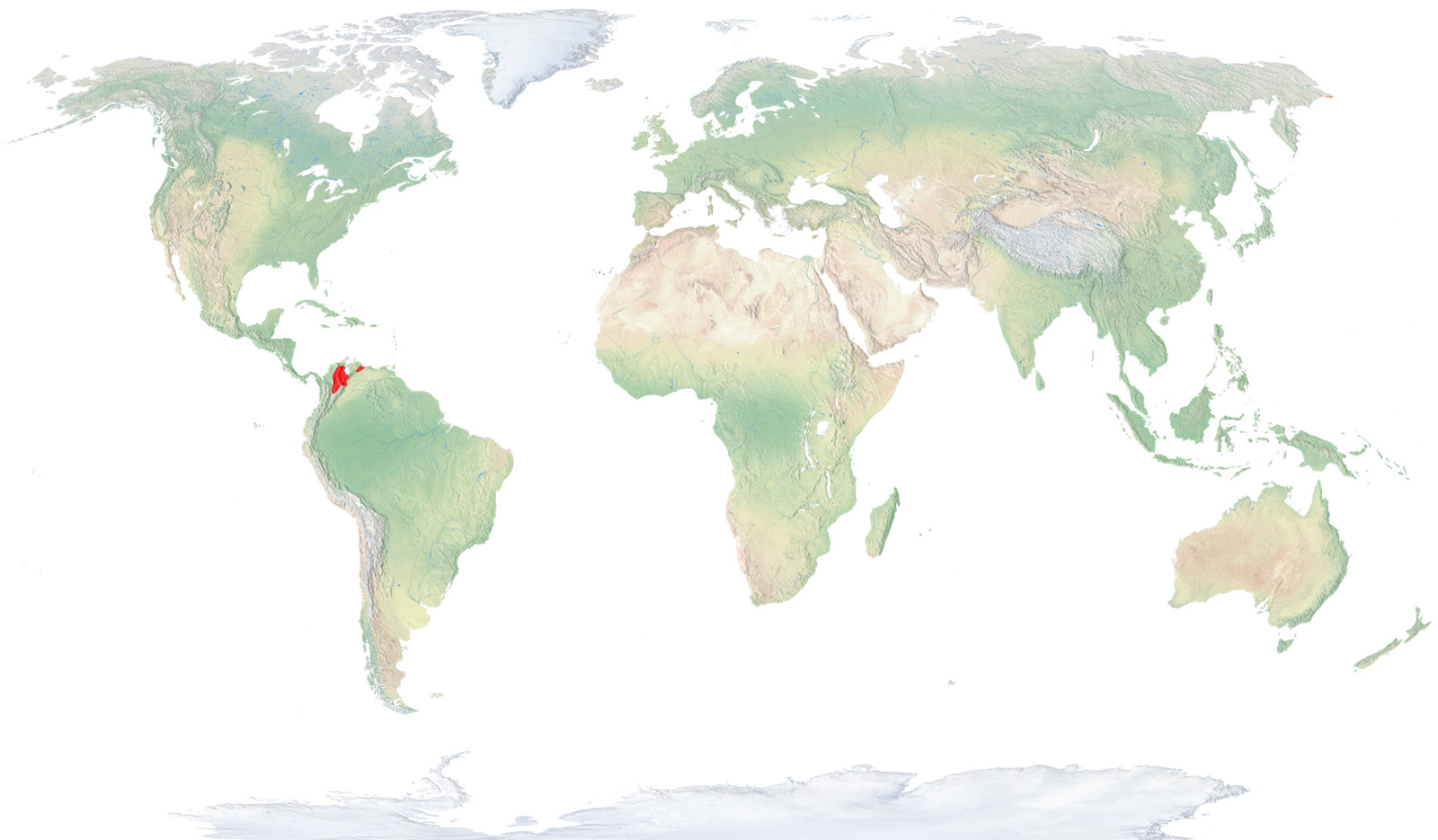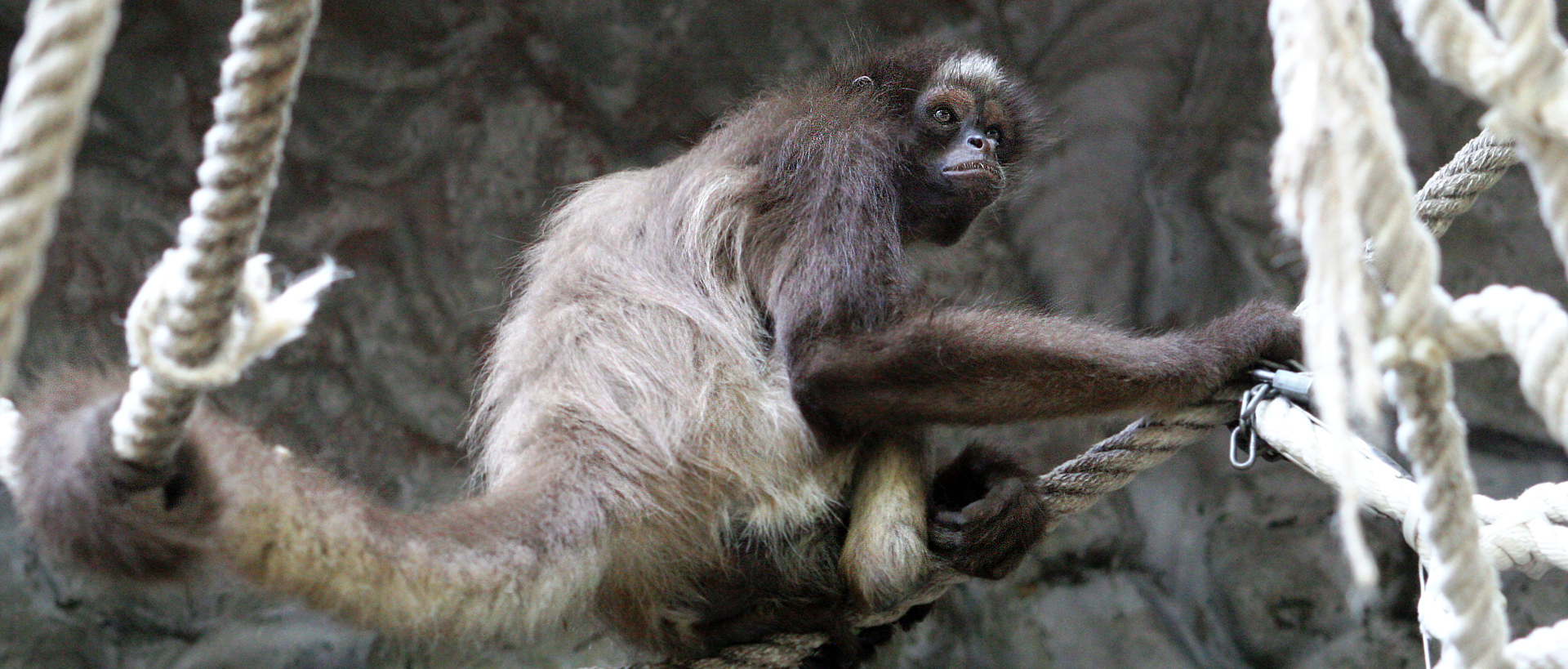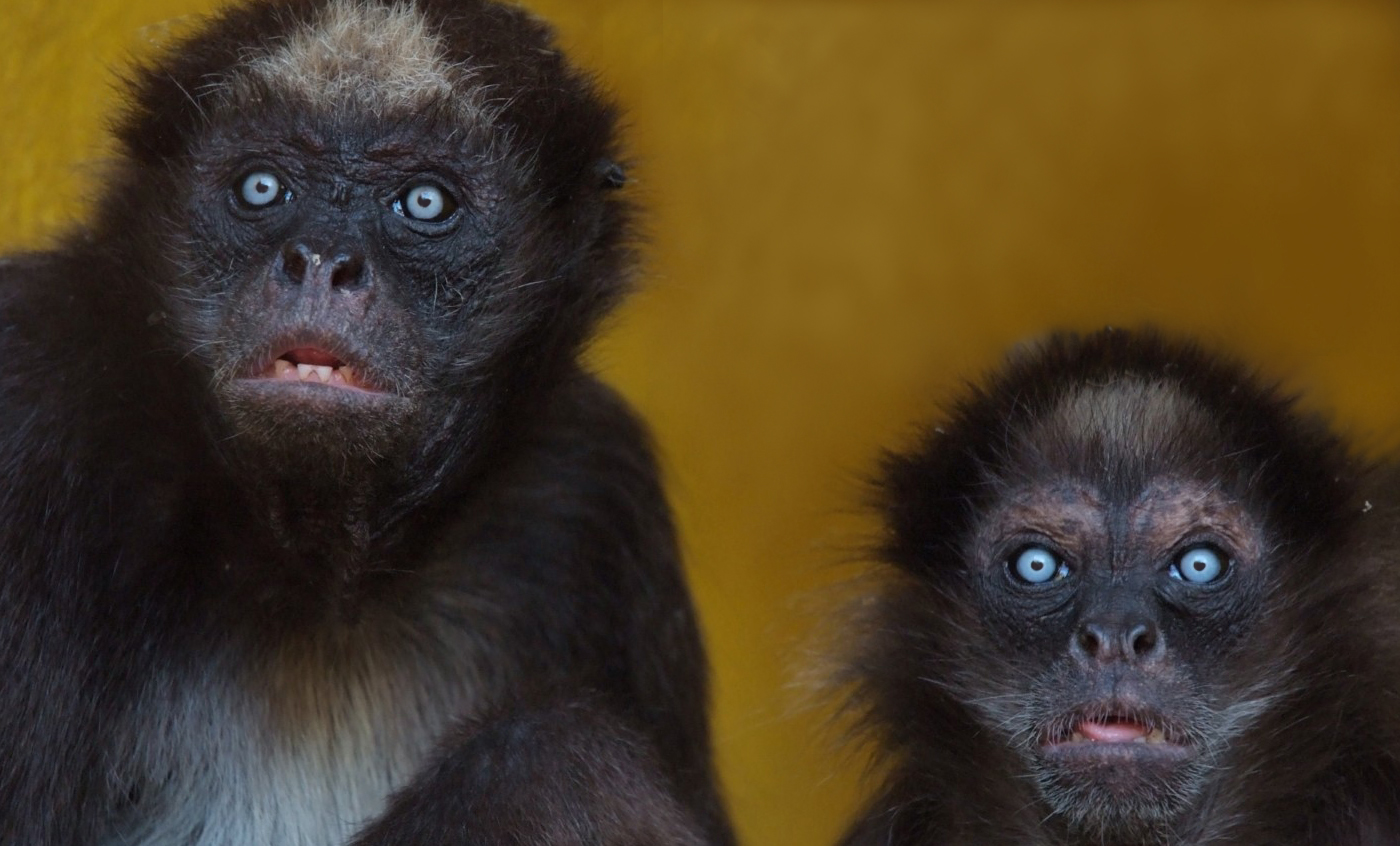Variegated spider monkey
This species of spider monkey inhabits the dense rainforests of northern South America and lives on the top of trees, were it moves nimbly, with the help of its prehensile tail, which is used as a fifth limb. Interestingly, they have no thumbs on their hands.
It is a diurnal animal that communicates with its voice through great distance and mainly feeds on fruits and seeds.
Breeding program
Natural habit
Northern Colombia and Venezuela.

- Distribution / Resident
- Breeding
- Wintering
- Subspecies
Risk level
- Extint
- Extint in the wild
- Critically endangered
- In Danger
- Vulnerable
- Near threatened
- Minor concern
- Insufficient data
- Not evaluated
Taxonomy
Physical characteristics
Biology
Reproduction
Biology
Spider monkeys are distinguishable by its longs and thin limbs and by its even longer prehensile tail, which lacks hair on the tip, in order to improve the grip to tree branches. Its upper body is brownish and its underpart is white, and it has a dark face with a whitish patch on the forehead. As in all spider monkey species, it lacks thumbs in its hands.
Plain rainforests, riverside forests and lowland montane rainforests lower than 700 m of altitude.
Its diet is basically frugivorous, as it is 90 % fruits and seeds, but it also eats other plant products, such as tender leaves, sprouts and flowers, capturing on rare occasions small invertebrates.
Gestation lasts for 226 to 232 days and a single baby is born each time. Babies cling to its mother’s belly during the first two months and then is carried on the back. They are breastfed for a year. Females usually reproduce only once every three or four years.
Spider monkeys are strictly arboreal and move through tree branches by hanging from their hands and prehensile tails, which they use as a fifth arm. They inhabit the highest part of the jungle and their convergence with the African colobus and the Asian gibbons is noteworthy, all occupying the same habitat.
Highly gregarious, they can form groups of up to twenty members, although they generally roam through the jungle in smaller groups of two to eight individuals.
Nowadays their populations are endangered, due to the deforestation of the tropical jungle for agricultural and livestock purposes, as well as due to excessive hunting, as their meat is highly valuable for many regions in their area of distribution.
The Zoo of Barcelona takes part in the EEP of this species.




